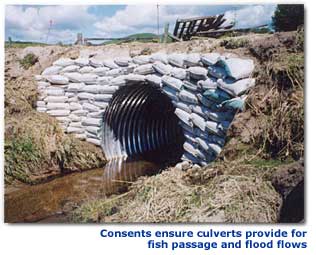Preparing your application
Talk to us first
The information you provide with your resource consent helps us evaluate the potential effects of your activities on your local environment. It also helps others who may be affected to clearly understand what you’re intending to do.
We can advise you on:
- what resource consents you require
- the supporting information you’ll need to provide with your application
- other people who should be consulted with about your proposal
- the general process, and what you can do to make the process as smooth as possible.
You can make the consent application process a lot easier by talking to Waikato Regional Council first. You’ll avoid unnecessary delays and extra costs later in the process because we’ll help you identify everything you’ll need to include with your application right at the start. You may also need resource consents from your local district council, so it’s a good idea to get in touch with them too. Some large and/or complex proposals may require further information to be submitted with the application.
Contact us or call us on 0800 800 401 to discuss your proposal before you put pen to paper.
Required information
Make sure you fill out the correct application form. The forms set out the information that is required, and include (amongst other things):
- A description of the activity or activities you want a consent for.
- Details about the location of your activity/activities. It is helpful if you provide a map, aerial photograph or detailed sketch plan that shows:
- orientation (with north arrow and scale)
- your property boundary and neighbouring properties (as well as neighbouring property owners' names)
- the nearest country road or state highway
- any existing or proposed access roads, farm tracks, works or buildings in the area
- the location of any waterways, wetlands or wildife habitats in the area
- historic or waahi tapu sites
- geothermal features
- the location of any key landmarks.
- An assessment of environmental effects (AEE).
- A description of any permitted activities that are part of the proposal, and how the relevant permitted activity rules in the regional plan are proposed to be complied with.
- An assessment against Part 2 (purpose and principles) of the RMA.
- An assessment against the policies and objectives of the Waikato Regional Council's plans and any relevant national instruments.
If you need to get a resource consent from another organisation, such as your district council, you will also need to let us know:
- the resource consents you need from that organisation
- whether or not you’ve already applied for these other consents.
Important note
The invasive freshwater gold clam has been found in the Waikato River and given the legal status of an Unwanted Organism under the Biosecurity Act. It means people must not knowingly move or spread the freshwater gold clam or water that may contain it.
To determine whether your water take activity meets the General Permissions requirements of the Biosecurity Act, visit the Ministry for Primary Industries freshwater gold clam webpage. If you either need further information or believe you are not able to meet the requirements of the General Permission, then you must email Corbicula.Permitting@mpi.govt.nz and request an application form for a permission under section 52 of the Biosecurity Act.



To ask for help or report a problem, contact us
Tell us how we can improve the information on this page. (optional)